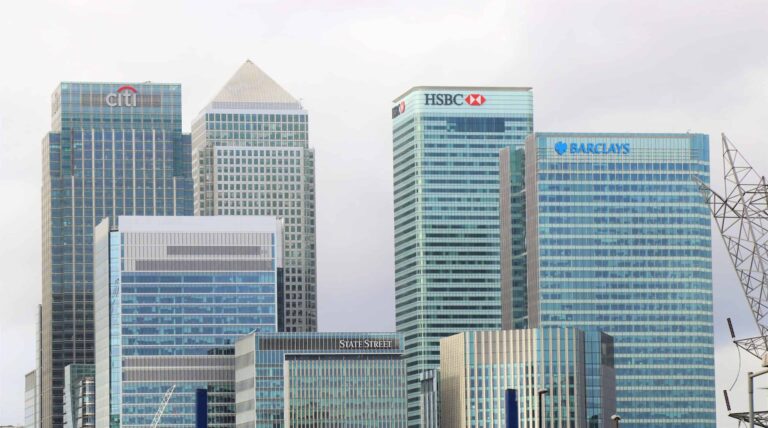It is common belief that banks on the old continent, unlike U.S. banks, enjoy greater stability and less exposure to the risks and dangers of the banking system.
This greater stability, however, does not allow one to let one’s guard down. Because while most European banks are not at risk of a meltdown consequential to the Silicon Valley Bank and Credit Suisse crisis, it does not mean that they are exempt from setbacks and dangers.
Here, then, is what the banking system risks and what the dangers are for European and US banks.
Table of Contents
A two-speed banking crisis
The current banking crisis seems to be proceeding at different speeds in Europe and the U.S. Thus hitting overseas banks harder and faster. We can see a clear sign of these differences between U.S. and European banks in the markets’ reaction to recent banking crises.
First the Silicon Valley Bank crisis and then the Credit Suisse crisis were absorbed by the market in different ways. And, at different times. Thus causing different impacts in the U.S. and Europe on markets and other banking stocks.
A clear sign of the double speed of the crisis lies precisely in the difficulties faced by Credit Suisse and Silicon Valley Bank.
The former, saw its collapse at the height of a long crisis. Which the bank tried to remedy on several occasions, with different strategies, throughout 2022. Strategies that, however, did not prevent the Swiss banking giant from falling. And eventually being absorbed by the other Swiss giant UBS.
Unlike Credit Suisse, whose crisis was ongoing during 2022, the crisis of Silicon Valley Bank, was sudden and violent. The California institution went from being one of the most promising banks of the year to total meltdown in a matter of months.
Banking interconnectedness
The current global banking system, without too much difference between U.S. banks and European banks, lies in the strong interconnectedness of lending institutions. This is an interconnectedness that caused a sharp drop in bank stocks in the aftermath of the collapse of Silicon Valley Bank. And to a lesser extent, the collapse of Credit Suisse.
Among the old continent’s banks hardest hit by the Silicon Valley Bank crisis were France’s Societé Generale. Which saw its share price drop by more than 27 percent. Followed by Spain’s Bankinter, which lost 26 percent and Sabadell, which lost 25 percent. Finally, Germany’s Deutsche Bank lost 23 percent. And, being one of Europe’s most important banks, its share price collapse resonated the most.
The risks to European banks
The fact that the European banking system has not collapsed, or that European banks have been able to absorb the blow of the collapse of Silicon Valley Bank and Credit Suisse, does not mean that European banks are not exposed to risks or dangers.
Among the most dangerous elements for European banks are their heavy reliance on the Additional Tier 1 securities market and the tightness of deposits and liquidity.
The latter is a problem common to the entire global banking system, since the actual liquidity of banks is less than the total value of deposits, due to the very operation of banks.
In other words, banks have less money than they virtually possess. Meaning that if by hypothesis all of a bank’s customers were to decide to close their accounts, the bank would not be able to give everyone their money. This is because a large part of the deposits are actually committed to mortgages, loans and investments.
Mortgages are another element of risk for the banking system. Although, European banks unlike U.S. banks, have less exposure to the commercial mortgage market.
Other elements of danger are the derivatives market, which has changed profoundly since the 2008 crisis. On this element, Deutsche Bank is the European bank most similar in numbers to U.S. banks.
Last but not least, government bonds are another element to consider. Government bonds are in general stable and safe investments. For this reason, banks tend to keep these securities frozen. To be more precise, government bonds are often armored in a section of the balance sheet. This is known as “held to maturity”.
As a result, since this is a blocked slice of capital affecting more than 3.3 trillion securities held by European banks, they represent a huge brake on bank liquidity.
Read also: A guide to financial instruments: what they are and which are the most common today
Losses from zeroing out AT1 securities
One of the most talked-about elements of the Credit Suisse crisis concerns the Swiss authorities’ decision to reset Credit Suisse’s Additional Tier 1 securities to zero without touching the stock instead.
This decision caused a major shock throughout the banking system. Thus causing massive sales on the AT1 securities generally used by banks to strengthen their assets.
The decision of the Swiss authorities raised a question. Namely, how much would the disappearance of this market affect the banking system.
The estimates say that the total cancellation of the AT1 market would cause losses on earnings per share in the order of 10 percent. This is a loss not too violent, definable as a small shock. Namely, not strong enough to cause a meltdown or trigger a banking crisis in Europe.












